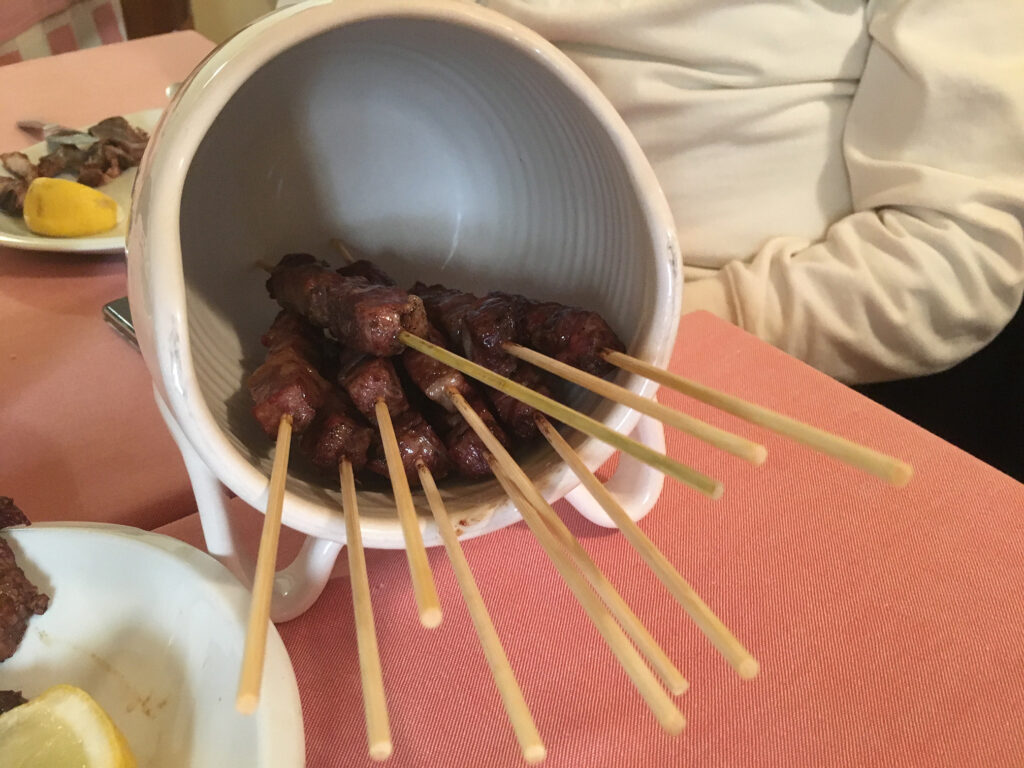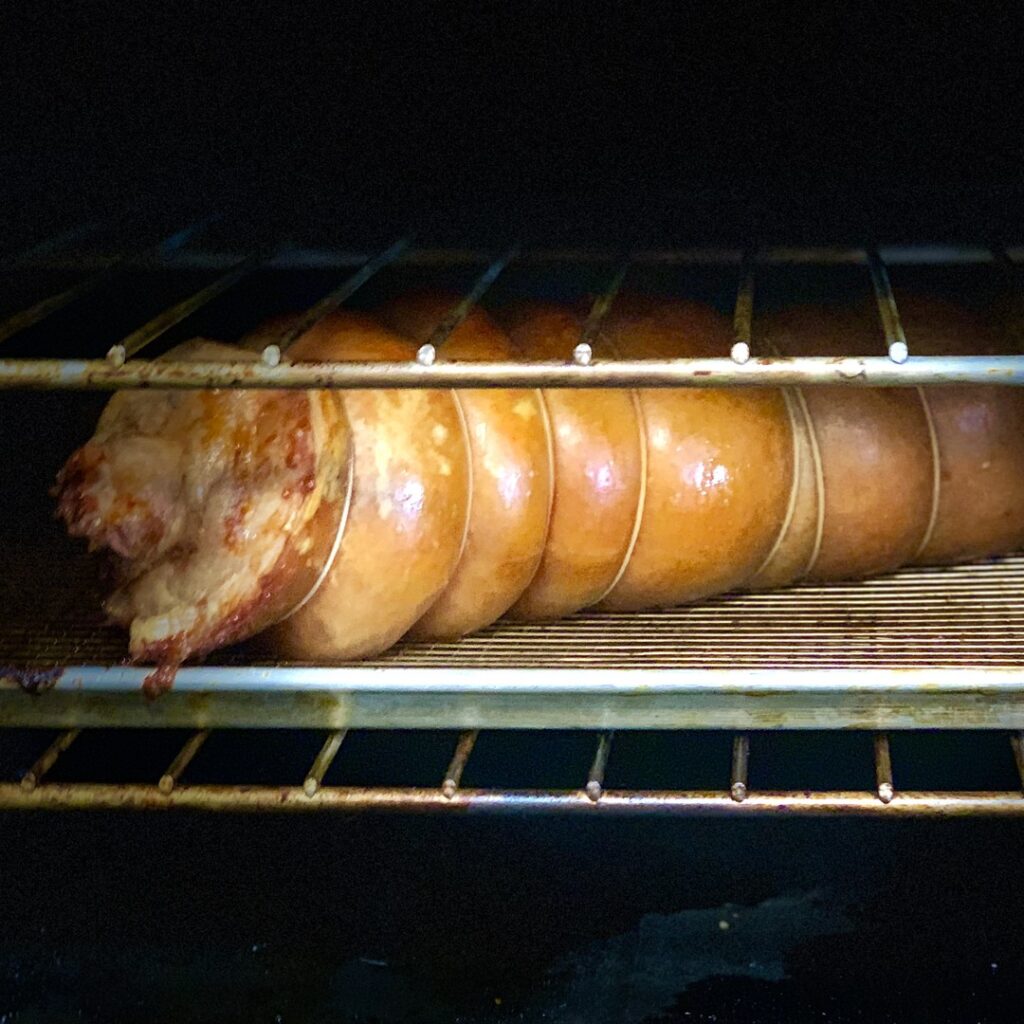Abruzzese cuisine is a reflection of its landscape. It blends the sea life of the Adriatic, pastoral offerings from the Apennines, and a bit of the produce from the areas with hospitable microclimates.
The cuisine of Abruzzo is often referred to as cucina povera, or poor kitchen. The food is rustic and without pretense. Very little goes to waste, if any at all. The ingredients are usually cheaper cuts that may not even be used at all in other regions.
Let’s take a high-level look at the cuisine of Abruzzo
Sea life
The transparent blue waters of the Adriatic harbor a good deal of life within its small, semi-enclosed waters. It is teeming with marine life, including dolphins, turtles, and seals, though these are not consumed. The local cuisine instead focuses on edible seafood like sardines, anchovies, squid, mussels, mackerel, tuna, crabs, prawns, and mullet.
Mullet roe is used to produce the delicacy bottarga, which is salted, dried, and sometimes ground. It is considered the poor man’s caviar, which is not to say it is cheap. It just does not have the same level of prestige as caviar. A typical use of it is to grate it over pasta to give it a little crunch and salty flavor.
Lamb & sheep

Abruzzo is often referred to as Italy’s pastoral land, on account of its abundance of lamb and sheep. They are well-suited to survive the rugged terrain and expansive mountains.
The area’s most popular dish is arrosticini, which is traditionally made with sheep meat.
It is worth clarifying that lamb refers to a young sheep; as it matures, it becomes a sheep.
The Abruzzesi raise the lamb. As adult sheep, they are used for shepherding purposes. Then, their meat is used in the regional cuisine. It’s practical, efficient, and smart.
That is why they use sheep meat for arrosticini. Additionally, the sheep meat has the more mature flavor that helps define the region’s signature dish.
Pig

While lamb/sheep may be the most abundant animals in Abruzzo, they are not the only ones. There are pigs in the area. The Nero D’Abruzzo pig (black pigs from Abruzzo) is an ancient and durable but rare breed. The breed was on the verge of extinction before a new breeding method was developed to save it.
Truffles are common in Abruzzo and, until recently, pigs were used to hunt them. Now, dogs are used.
Pigs are used in another signature Abruzzese dish, porchetta. The dish exists in other regions, but the regional variation is the most fragrant, flavorful, and moist.
Other proteins
While not as frequently associated with Abruzzo as sheep, there are other sources of protein in the area. Among other animals, wild boar and cattle have a place in Abruzzese cuisine. They are often used in stews and other hearty dishes.
Another mountainous animal that, as of yet, has gone undiscussed is goat. It fits the mold of the type of animal that can thrive in the area perfectly. Like boar and cattle, it is often used in stews. The most popular goat dish in Abruzzo is Capra alla Neretese, a specialty native to the town Nereto. This dish is made in a tomato sauce with fried red peppers.
Dishes made from chicken exist but are not as common. However, eggs are essential not only to the region’s baked goods, but to another of its signature dishes, scrippelle ‘mbusse, which is a thin, egg-based crepe with pecorino cheese that is rolled up and served in a broth.
Le Virtú Minestrone
Le Virtú (The Virtues), is the dish that should be most associated with Abruzzo. It embodies the region in one soup. It is a rustic cucina povera minestrone (hearty soup) that is filled with legumes, spices, native vegetables, pasta, and parts of the animal others might discard, pig’s feet. When it is done right, it takes a while to make and the ingredients are treated with respect.
The recipe is not set in stone. If one area has an abundance of something another does not, the ingredients may change, keeping with the spirit and authenticity — or virtues, if you will — of the dish. Traditionally, it has upwards of fifty ingredients so that nothing goes to waste.
The minestrone is served on May 1 (La Festa dei Lavoratori) in the province of Teramo. It symbolizes the change from winter to spring. It is a celebration of change, growth, and strength.
Cheese

Pecorino is the most prominent cheese made in Abruzzo. As you may expect, it is made from sheep’s milk. The name is derived from pecora, or sheep in Italian.
Caciocavallo is another popular cheese from the region. In English, the name means horse cheese, which does not sound appetizing, but it is made from cow’s milk.
There are many theories as to the name’s derivation, but it may be related to the way the cheese is tied up and hung to dry into a pear-like shape. It resembles the saddleback on a horse.
The cheese is categorized as pasta filata, which means it is a stretched curd.
Scamorza bears similarities to mozzarella. There is also a smoked version of scamorza that, in my opinion, is the better option. Like caciocavallo, though, it is pasta filata cheese made from cow’s milk.
Pasta filata cheeses are typically tied up and hung to dry. There is no set standard form or mold. The shape of each can vary, adding to its uniqueness.
Faith & tradition
Abruzzo is a deeply Christian region and the faith of the Abruzzese influences their cuisine.
Desserts like Cagionetti, Parrozzo, and Bocconotti are traditionally made at Christmastime. Easter features pupe e cavalli (dolls and horses) shaped cookies.
As a kid, the Easter horses and dolls kind of freaked me out, but I loved the giant chocolate eggs we would get. They had a toy inside, but I was mostly excited because, well, it was a giant piece of chocolate.

February 3 is the Feast of San Biagio (Saint Blaise). San Biagio is one of the Fourteen Holy Helpers, a group of saints to whom some Christians pray to protect them from various ailments. The hard and savory taralli are made on his feast day and the tradition is to bless the throat with a tarallo so he protects it.
With time, these acts of faith have turned into honored traditions. The meanings behind them may take a back seat, but the ties to family and history still remain.
Abruzzese food is rich in history, even if the area has been steeped in poverty. There are so many topics not covered on this page that we will explore this in further detail in the recipes and shared stories!

